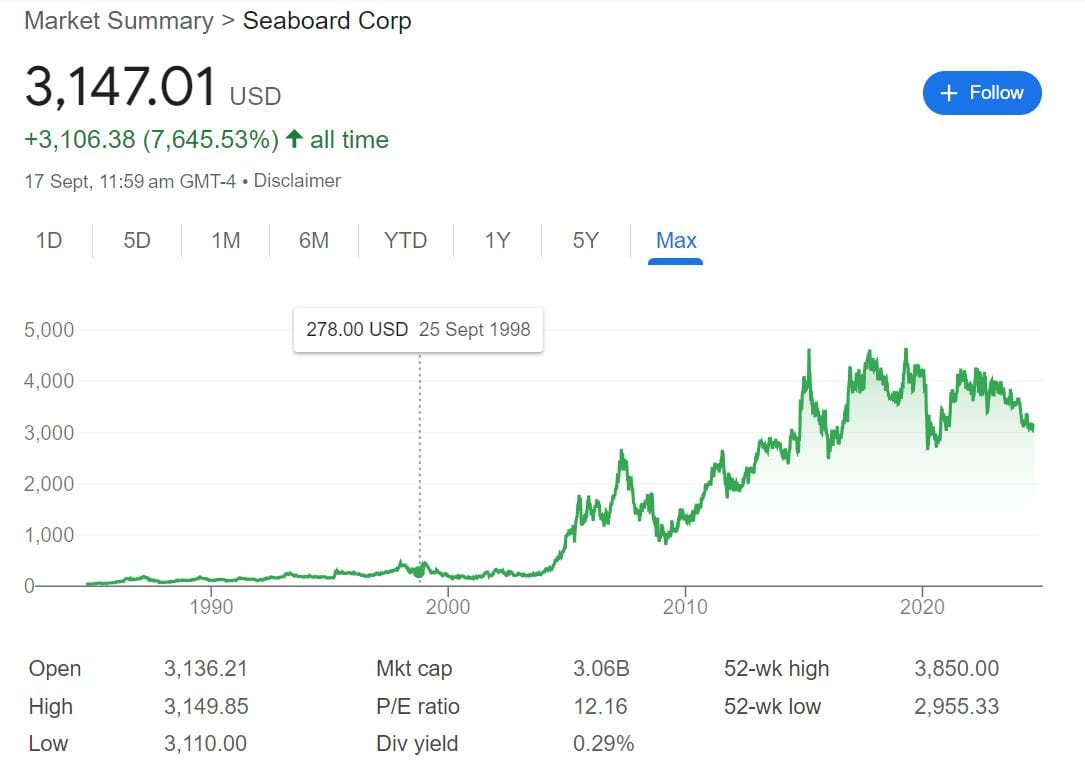Low Float Stocks: How to you use your screener to find them

Some Investors may be willing to take a higher risk in the market for higher rewards but many of them find it challenging to find such enough opportunities in the market.
Traditional, high-volume stocks may not always yield the desired outcomes.
However,
Low float stocks present a compelling solution to this problem.
With a smaller number of shares available for trading, these stocks can experience more pronounced price movements, potentially leading to substantial gains for those who strategically invest.
In the Blog Post below we will discuss these low-float stocks, what risks and benefits they offer, how to invest in them strategically and how to use Stock screeners to find them.
So, Let’s start!
What are Low Float Stocks?
Low float stocks are shares of a company with a relatively small number of shares available for trading in the open market.
The "float" refers to the total number of shares that are NOT held by insiders, executives, or major stakeholders and are thus available for trading by the general public.
Because the supply of these shares is limited, low float stocks can experience more significant price volatility and can react more sharply to news or market events compared to stocks with a larger float.
Ok,
So before we move further, let's answer a confusing question first
Are Shares outstanding and Float Size the same?
Absolutely Not!
Shares Outstanding is the total number of shares of a company that have been issued and are currently in circulation. This includes shares held by investors, employees, institutions, and the company itself.
Float Size or Free Float, on the other hand, is a subset of shares outstanding. It specifically refers to the number of shares that are available for trading in the open market. This excludes shares that are restricted or locked up, such as those held by insiders, institutional investors, or as treasury stock.
In simpler terms:
Shares Outstanding: The total number of shares a company has created.
Float Size: The number of shares that can be freely bought and sold.
Why Invest in Low Float shares?
Investing in low-float shares can offer several potential benefits:
These shares often exhibit greater price swings due to their limited supply. This volatility can create opportunities for significant short-term gains if the stock moves in your favor.
Because there are fewer shares available for trading, even small buying or selling actions can have a larger impact on the stock's price. This can be advantageous for investors who can act quickly and capitalize on market movements.
The heightened volatility can provide a multitude of opportunities for trading and can amplify returns on successful trades. Investors who accurately predict price movements may see larger percentage gains compared to higher float stocks.
News, earnings reports, or other catalysts can lead to dramatic price movements in low float stocks. For investors with a high risk tolerance, these stocks offer the chance to benefit from such events more substantially.
Low Float stocks may also show some
Undervalued Opportunities
As institutional investors and analysts may overlook these stocks due to their smaller size and trading volume, This can sometimes present opportunities to invest in undervalued companies before they gain broader attention.
What can be the potential Drawback of Investing in Low Float Stocks?
Scarcity of low floats can lead to increased volatility as even small changes in demand can cause significant price fluctuations. Additionally, the limited liquidity of these stocks can make it difficult to buy or sell them, potentially resulting in wide bid-ask spreads and higher transaction costs.
One of the biggest concerns with low float stocks is the risk of manipulation. A small group of investors or insiders who control a significant portion of the outstanding shares can artificially inflate or deflate the price, potentially causing significant losses for other investors. This is particularly problematic as thus gives rise to Information Asymmetry. Due to the limited number of shares and potentially fewer analysts covering low float stocks, investors may have less access to information and analysis compared to larger, more widely followed companies. This can increase the risk of making uninformed investment decisions.
While the potential rewards of investing in low float stocks can be significant, the risks are also substantial. Investors should carefully consider their risk tolerance and investment goals before investing in these securities. It's essential to conduct thorough research, understand the underlying business, and be prepared for potential volatility and liquidity issues.

What are the Factors Contributing to Low Floats:
Low float stocks often result from a combination of factors.
- Private Equity Ownership: Companies that were once publicly traded but have been acquired by private equity firms often have low floats. These firms may choose to retain a significant portion of the shares, reducing the number available for public trading.
- Family-Owned Businesses: Many family-owned businesses may choose to retain a controlling interest in the company, limiting the number of shares available to the public. This can create a low float situation.
- Recent IPOs: Newly public companies may have a low float, especially if the initial public offering (IPO) was relatively small or if the company's founders retained a significant portion of the shares.
- Share Buybacks: When a company repurchases its own shares, it reduces the number of shares outstanding, which can contribute to a low float.
- Treasury Stock: Treasury stock is stock that a company has repurchased from shareholders and holds in its own treasury. This can reduce the number of shares available for trading, leading to a lower float.
- Lock-Up Agreements: Lock-up agreements are often part of IPOs and other corporate transactions. These agreements restrict the ability of certain shareholders, such as insiders or early investors, to sell their shares for a specified period of time. This can temporarily reduce the float.
How to Identify Low Float Stocks with your Stock Screener?
Alright,
So now the bigger question,
How to identify these stocks?
Setting up Criteria in your stock screener is an important step to identifying such potential opportunities
You can use several Filters in your stock screener or a combination of some to find some low float opportunities
Screener Filters for Low Float Stocks
1. Market Capitalization
Definition: The total market value of a company's outstanding shares.
Why it matters: Smaller market capitalization companies typically have fewer shares outstanding, which can lead to a smaller float. This means there are fewer shares available for trading, potentially increasing volatility and the potential for larger price swings.
Range: Under $1 billion
2. Shares Outstanding
Definition: The total number of shares of a company's stock that are currently in existence.
Why it matters: A lower number of shares outstanding directly indicates a smaller float. This means there are fewer shares available for trading, which can increase price volatility and the potential for larger price swings.
Range: Under 10 million shares
3. Float Percentage
Definition: The percentage of a company's total shares that are available for public trading.
Why it matters: A lower float percentage indicates a smaller float. This means that a larger portion of the company's shares are held by insiders, institutions, or other entities that may not be actively trading. A smaller float can lead to increased price volatility.
Range: Less than 10% or 20%
4. Average Daily Volume
Definition: The average number of shares of a stock that are traded each day.
Why it matters: A low average daily volume can suggest limited liquidity, which is often associated with smaller floats. Limited liquidity can make it difficult to buy or sell large quantities of the stock without significantly impacting the price.
Range: Under 100,000 shares
5. Insider Ownership
Definition: The percentage of a company's shares that are owned by its insiders, such as executives, directors, and major shareholders.
Why it matters: High insider ownership can indicate a smaller float. Insiders may be less likely to sell their shares, which can reduce the number of shares available for public trading.
Range: Over 50% or 60%
6. Price-to-Book Ratio (P/B)
Definition: The market price of a stock divided by its book value per share.
Why it matters: While not a direct indicator of float size, a low P/B can suggest an undervalued stock. Undervalued stocks may have a smaller float, as investors may be less willing to sell their shares at a perceived discount.
Range: Below 1 or 2
7. Price-to-Earnings Ratio (P/E)
Definition: The market price of a stock divided by its earnings per share.
Why it matters: Similar to the P/B ratio, a low P/E can suggest an undervalued stock. Undervalued stocks may have a smaller float due to lower investor interest.
Range: Below 15 or 20
8. Beta
Definition: A measure of a stock's volatility relative to the overall market.
Why it matters: A high beta suggests a stock is more volatile than the market average. This increased volatility can be associated with smaller floats, as there are fewer shares available to absorb price fluctuations.
Range: Above 1.2 or 1.5
Other Factors to Consider When Trading Low Float Stocks
Beyond the screener filters, several other factors should be considered when trading low-float stocks:
1. Company Fundamentals:
While a low float stock might appear attractive due to its potential for high volatility, it's essential to assess the company's underlying financial health. For instance, a company with a strong balance sheet, consistent revenue growth, and a competitive advantage in its industry is more likely to withstand market fluctuations and deliver long-term value.
It becomes important to understand;
Financial Health: Assess the company's financial performance, including revenue growth, profitability, and debt levels.
Business Model: Evaluate the company's business model, competitive position, and long-term growth prospects.
Management Team: Consider the quality and experience of the company's management team.
2. Market Sentiment:
A low float stock might be experiencing a surge in price due to positive news or increased investor interest. However, it's important to consider whether this sentiment is sustainable. If the underlying fundamentals of the company do not support the current valuation, the stock may be at risk of a correction.
3. Risk Tolerance:
Low float stocks are inherently more volatile than larger-cap stocks. If you have a low risk tolerance, investing in low float stocks may not be suitable for your investment goals. It's essential to assess your personal risk profile and allocate your capital accordingly.
4. Liquidity:
A low float stock with a very low trading volume can make it difficult to buy or sell large quantities without significantly impacting the price. This can limit your ability to exit the position quickly if the market turns against you.
5. Market Manipulation Risks:
Low float stocks are more susceptible to market manipulation due to their limited liquidity. It's essential to be aware of potential red flags, such as unusual trading activity, excessive price volatility, or unsubstantiated rumors.
6. Regulatory Environment:
Understand the regulatory environment that the company operates in. Changes in regulations can have a significant impact on the stock's price.
7. Trading Strategy:
Decide whether you're interested in short-term trading or long-term investing. Low float stocks can be suitable for both strategies, but your approach may differ based on your time horizon.
By carefully considering these factors in addition to the screener filters, you can make more informed decisions when trading low float stocks and improve your chances of success.
Conclusion
Low float stocks offer the potential for significant gains but also come with increased risks. By understanding their characteristics, utilizing effective screener filters, and carefully considering additional factors, investors can make informed decisions and navigate the challenges associated with this investment strategy.





